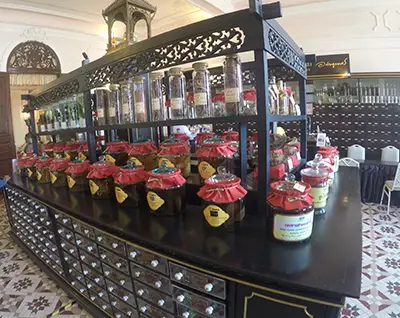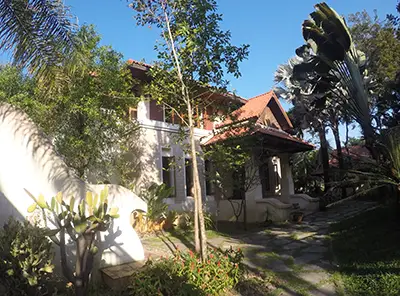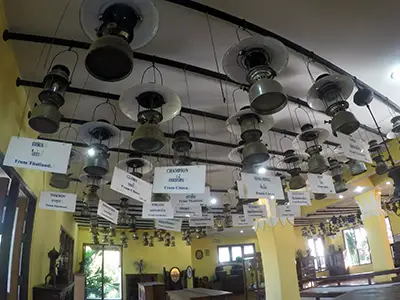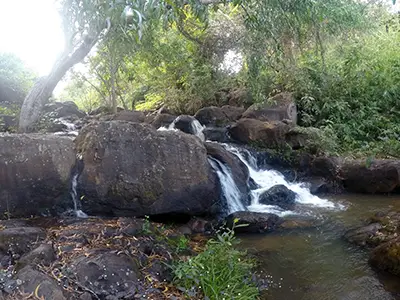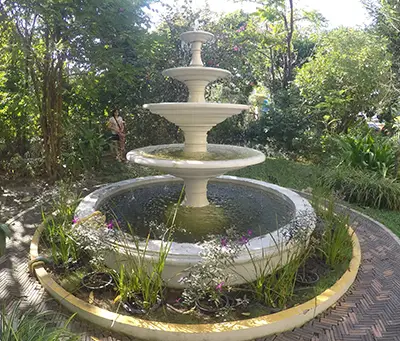Thailand is famous (and infamous) for many things. From white-sand beaches to highly ornate temples, from congested traffic to corrupt officials: the Land of Smiles has it all. But you don’t have to be living in one of the large city centres like Bangkok, Chiang Mai or Phuket to experience what Thailand really has to offer. Short day trips from any province can provide you as many opportunities as your travel time will allow.
One such province is Prachin Buri, located at about 135km northeast of Bangkok in the valley created by Prachin Buri River and the mountainous area of Kao Yai National Park. A quick Google search will list tens of attractions that one could choose to explore on a one-day visit to the province.
I recommend visiting three very distinct but highly engaging attractions: Chao Phraya Abhaibhubejhr Building, a two-story baroque-style mansion; Yusuksuwan Museum, a private museum with over 10,000 antique lamps; and Khao Ito waterfall within the Pa Namtok Khao Ito National Forest.
It is no secret that soap operas are one of the major means of television entertainment for many Thai people, so when the set of one such series is a famous building which can be regularly visited, then you get a combination of both education and entertainment. This is the case with Chao Phraya Abhaibhubejhr Hospital and the European style building of the same name, which was not only the set of a popular soap opera but it’s also the centre of traditional Thai medicine.
Chao Phraya Abhaibhubejhr Building was built in 1909 to serve as the residence of King Rama V on his royal visit to Prachin Buri Province. The hospital was built some decades later in 1941 and it became the 19th hospital ever built in Thailand. The baroque-style building is very well-maintained and, apart from being a great location for photo opportunities, it is also a centre for learning about traditional Thai medicine. This attraction seems to have it all: a museum, a herb garden, an old pharmacy that sells traditional Thai medicine, and there’s even a massage corner.
The adjacent hospital combines the old and the new by applying traditional Thai medicine in their daily practice and collecting, storing and distributing Thai herbs. With a collection of over 2000 species of herbs and a great archive comprising of about 800 treaties on traditional medicine, Chao Phraya Abhaibhubejhr Hospital lives up to its legacy.
The hospital is located on Prachin Anuson Road, just off Highway 3069 and there’s no entry fee. To find out more about the history, services and the products they have, visit their bilingual Thai-English website.
The next destination is a more light-hearted one: Yusuksuwan Museum, which is also known as the Lantern Museum. The museum was named after its founder Narong Yusuksuwan, a scrap-metal dealer, who made his great collection of lanterns open to the public. La pièce de résistance is the pressurized paraffin lantern which is on display in amongst the thousands of others, covering entire ceilings and visible in all three main buildings and the barn that make up the museum grounds.
But there are also more things on display, not just lamps. It seems that Khun Narong was a well-rounded hobbyist as his collection is also comprised of antique radios, clocks, cameras, fans, furniture, bicycles, military helmets, coins, banknotes, amulets, religious texts, lottery tickets, cans, toys, books, motorbikes, computers and many other little trinkets.
This can be a bit too much to take in, all in one view, but I do believe that the greatest value the Lantern Museum has to offer is the several stations where it reproduces the Thai lifestyle of several decades ago. For example, you can explore an old barbershop (with scary-looking sharp razors on display!) or at the tea station you can try to imagine how Thai tea was made during your grandma’s time.
There’s even a small zoo area with some large birds crowded in small cages and a rather sad-looking crocodile in a concrete pit. But the grounds of the museum are well organized and there’s literally something to look at in every part of the museum. You’ve also got a few photo stations and funny signs to pose next too, plus a souvenir shop for you to buy some quality memories.
Yusuksuwan Museum is located at 135 Prachintakam Road and the entry fee is 80 baht for adults and 40 baht for children. Unfortunately, the museum has a two-price policy and the tickets are double the price for foreigners, but you can get the local Thai price if you show your Thai driver’s licence or your work permit. Their Thai language-only website gives more information about the history of the museum and has some great photos of the items on display.
Your last destination for the day should be somewhere out there, in and amongst nature. You should take full advantage of the natural environment of Prachin Buri and visit the Khao Ito waterfall. Located inside the Pa Namtok Khao Ito National Forest, the waterfall is not that easy to reach, but once you’re on the right road, it can be a very enjoyable hike up the mountain.
The forest covers an area of almost 22 square km and it can be a great place to have a picnic under the shade of its natural vegetation. Khao Ito waterfall is most spectacular during the rainy season, but during the rest of the year there’s still a quiet flow of water moving over boulders of various sizes and a few waist-deep pools where you can splash some water on yourself and your travelling companion(s). If you’re up for more exercise, you can go for a brief hike to Pah Hin Son “scenic spot” or if you have your mountain bike with you, you can take it for a ride on a specially designed bike trail.
To reach the waterfall, follow the signs to Chakkraphong Reservoir but go further more up the road (for less than a kilometre) and get ready for the climb. There is no entry fee.
From Bangkok, Prachin Buri can be reached by bus from Mo Chit 2 terminal, by train from Hua Lampong train station, and by minivan from Victory Monument. If you own your own vehicle, then simply drive up to Phahonyothin Road and follow the signs.
Initially published in Mango Metro (April 2015, Vol. 9, No 5)

